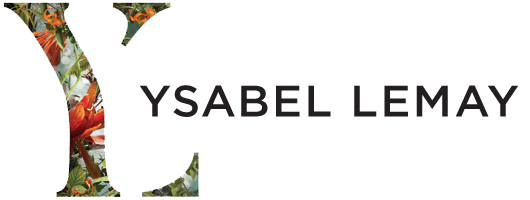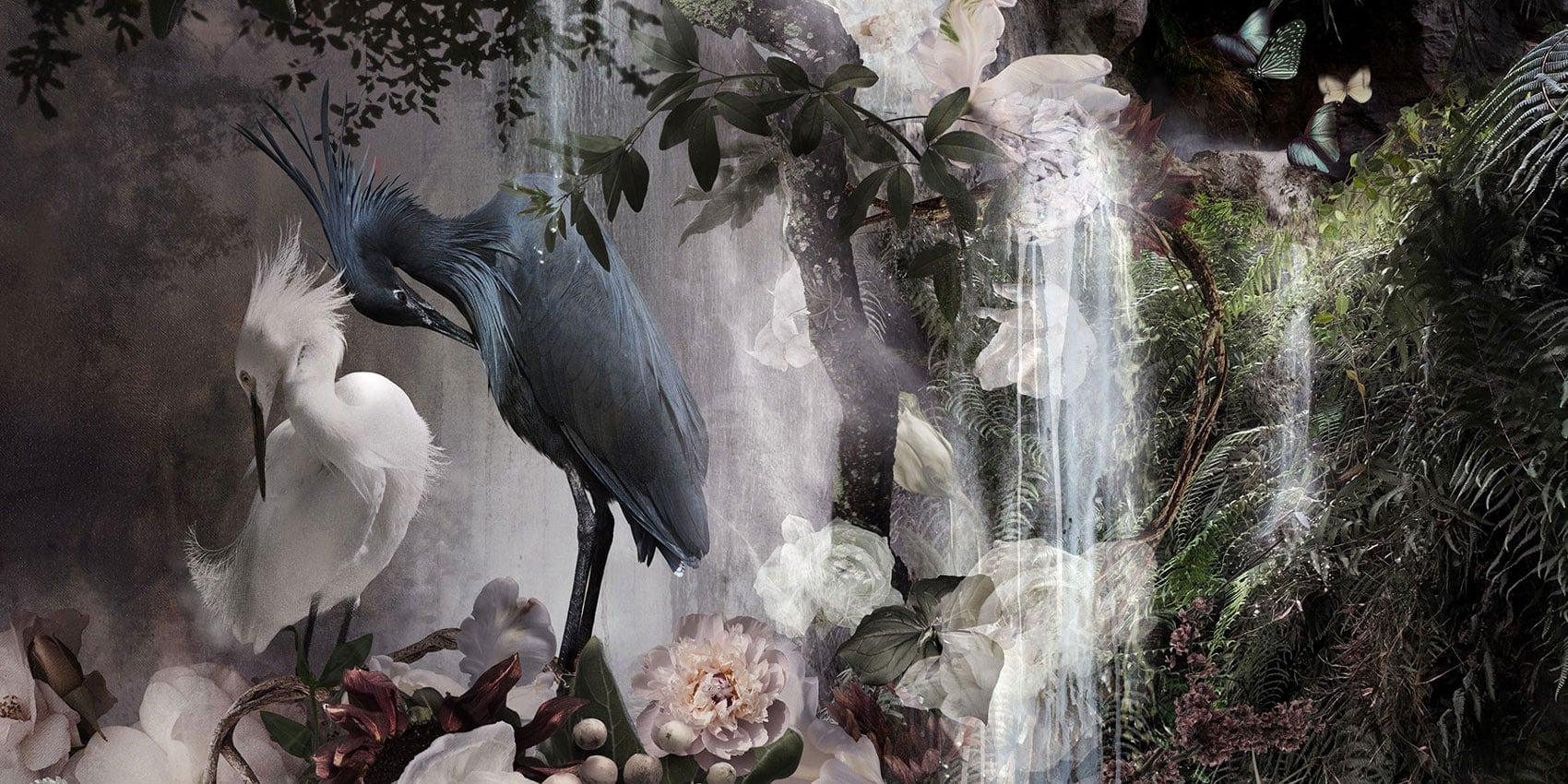It’s Only Natural: Ysabel LeMay’s Constructed Worlds
March 23, 2016
By Alyssa Coppelman
http://goo.gl/yiM2lz
[column-half-1]
Ysabel LeMay’s digital compositions are brilliantly wild depictions of places that seem almost real. However, she painstakingly constructs them piece-by-piece from photographs she takes around the world.
LeMay’s interest in the natural world began with family visits to a cabin in the Quebec woods. “I was born in a community where art was nonexistent, so the closest thing in my childhood was nature,” she says. “Because nature and consciousness are very artistic, I could sort of express it that way.”
Early on, LeMay worked in advertising as a graphic designer and art director, always on the conceptual side rather than the technical. She left advertising for a more hands-on creative experience and painted intensely. It strengthened her visual language but eventually wore her out. In 2010, a friend lent her a camera. At the time, LeMay didn’t have technical photo experience, but after seeing what she produced in a month, her friend told LeMay to keep the camera. That was the beginning of her photographic oeuvre.
LeMay likens her digital collage process to painting, combining elements as she did with a paintbrush, but in Adobe Photoshop. Because of her initial ignorance of the application, she developed her own way of doing things, resulting in a unique visual style. “Never underestimate the power of naïveté because this is where the genius resides,” she says.
LeMay advanced quickly by hiring a Photoshop technician to teach her how to get the results she wanted. Even now, she’ll consult an expert when she wants to use techniques outside her skillset, whether with shooting or post-production.
Outside of a few commissions, her pieces depict flora and fauna from multiple habitats, combined in fantastical ways. She pulls the component images from the giant photo archive she’s built over the past six years. (Though she shoots almost everything herself, she occasionally has to outsource photography of certain butterflies or birds, especially with commissions.)
LeMay travels with a small kit that fits in one suitcase: a Fujifilm XT-1 camera, a few good lenses, two flashes, a tripod, and two simple backdrops. She shoots almost everything in situ and purposefully photographs it very flat so she can develop the specific look she wants later using Photoshop.
Once back home in Austin, Texas, LeMay begins the extraction process. It can take her hours to extract one element from a photograph. Imagine isolating one tree from its forest background, making sure no leaf is left behind—or included when it shouldn’t be. Fortunately, she considers this process meditative. “There’s an energy that is very different from one plant to another,” she says. “I feel it, I see it, and especially when I extract, I can really get in touch with what it is because I see it very close up. And then the challenge is to organize all these different energies in the space.”
LeMay doesn’t begin a composition with an overall plan. Instead, she chooses one element; for example, a plant that’s captured her interest. She’ll work on its shadow and lighting before adding another piece, then maybe adding a glaze—then another piece, and another, until she’s built the final artwork. She compares the process to making jazz, starting with one note and improvising from there. “Photoshop allows you to take different roads to arrive at the same place,” LeMay adds. “That’s what I like about it. You learn the base and then it’s your intelligence and capacity to take different roads to get to the same result.”
The smallest works use 150 to 200 separate elements; the largest may incorporate 300 to 600 elements. Each piece is informed by various influences: life events, books she’s reading, or her emotions.
After LeMay has invested at least four to six weeks in one artwork (not including the photography), she and Alain Omer Duranceau, who has been her “creative right hand” for 30 years, together tweak elements and adjust lighting. Only then is the polished artwork complete.
“I’m known to push the boundaries of photography,” says LeMay. “That’s how you define my work. And I’m pushing those boundaries with Photoshop—because without that program, I wouldn’t be able to do what I’m doing right now.”
LeMay’s work will be exhibited by Catherine Edelman Gallery at the AIPAD Photo Show in New York City April 14-17, and beginning in May at the Museum of Photographic Arts in San Diego.
[/column-half-1]
[column-half-2]
[/column-half-2]









